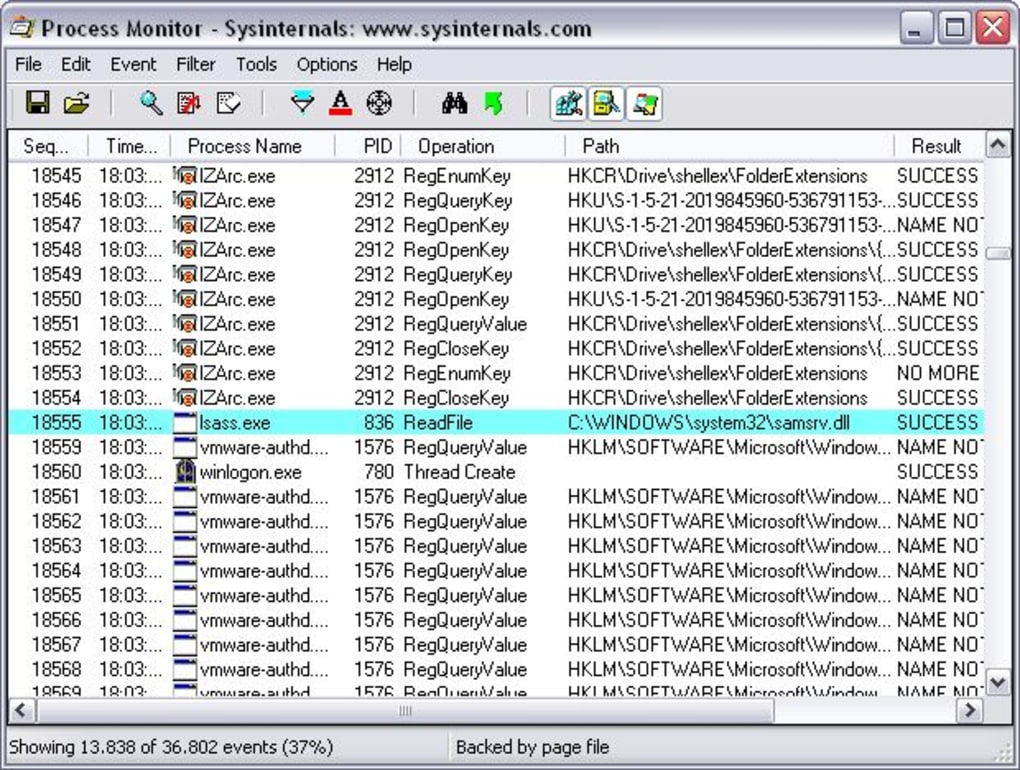

If it’s worth the time to use one of these tools then it’s probably worth the time to use both, and you will commonly find yourself doing this. In daily use I often start with Process Explorer to find processes which are consuming a lot of system resources and then move to process monitor to dig deeper into these processes. Using it you can find out what files, DLLs, and registry keys particular processes have open and the CPU and memory usage of each. Registry Process Monitor logs all Registry operations and displays Registry paths using conventional abbreviations for. To remove file system operations from the display de-select the file system push-button in the Process Monitor toolbar and to add back file system operations depress the button. Process Explorer is considered to be a more advanced form of the Windows Task Manager. Process Monitor as being relative to drive Z. You can think of this as a combination of the old FileMon and RegMon tools with some basic diagnostic features. This tool will display information regarding the file system, registry, and the processes running on the system as they are occurring.

Process Monitor is a real-time troubleshooting tool. I’ve written tips on both of these and frequently see people confuse them or even ask about the differences between the two. Process Monitor is an advanced monitoring tool for Windows that shows real-time file system, Registry and process/thread activity. Process Monitor and Process Explorer both have a lot in common as they are both Microsoft Sysinternals tools designed to help you troubleshoot and debug processes on a Windows host.


 0 kommentar(er)
0 kommentar(er)
